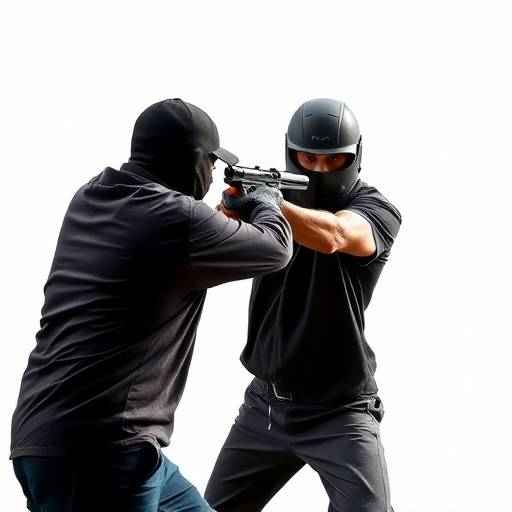Pepper spray, an effective self-defense tool, uses capsaicin to temporarily disable attackers. Local regulations vary widely regarding possession and use. Proper car storage is crucial for maintaining potency, safety, and legal compliance. It offers individuals security in high-risk areas and swift solutions in unexpected situations, enhancing personal protection for commuters.
“Personal protection sprays, especially pepper spray, offer a powerful tool for self-defense. This comprehensive guide explores the essentials of an inflammatory agent personal protection spray, delving into its active ingredients and effects, legal implications of carrying such devices, and safe storage practices, particularly for those stored in cars. Learn when and how to deploy these defensive tools effectively, ensuring your safety and peace of mind.”
- Understanding Pepper Spray: Active Ingredients & Effects
- Legal Considerations for Carrying Self-Defense Spray
- Safe Storage Practices: Protecting Your Pepper Spray in the Car
- Effective Use Scenarios: When to Deploy Personal Protection Spray
Understanding Pepper Spray: Active Ingredients & Effects
Pepper spray, an inflammatory agent personal protection spray, is designed to incapacitate an assailant temporarily by causing a burning sensation and difficulty breathing. Understanding its active ingredients and effects is crucial when considering its use for self-defense. The primary active ingredient in pepper spray is capsaicin, the chemical responsible for the heat and pain associated with chili peppers. When sprayed onto the eyes, skin, or respiratory tract, capsaicin irritates these areas, leading to temporary blindness, reduced visibility, coughing, and labored breathing.
The effects of pepper spray are rapid but usually last only a few minutes, providing enough time for the user to escape or seek help. Storage of pepper spray in a car is a significant consideration, as extreme temperatures can affect its potency. It’s recommended to keep it in a cool, dry place away from direct sunlight and heat sources, ensuring its effectiveness when needed most.
Legal Considerations for Carrying Self-Defense Spray
When it comes to carrying a self-defense spray like pepper spray, legal considerations are paramount. Different regions have varying regulations regarding the possession and use of such devices. In many places, pepper spray is legally classified as a weapon, subject to strict controls. Before purchasing and carrying a personal protection spray, individuals should familiarize themselves with local laws. Some areas require permits or registration for certain types of self-defense tools, including sprays.
One practical consideration for users is proper storage. Pepper spray storage in car compartments is a common practice, but it’s crucial to understand the legal implications. Storing self-defense spray openly in a vehicle may be prohibited in some jurisdictions, so checking local rules is essential. Many advocate for keeping it secured and out of plain sight to avoid any potential misunderstandings. Always ensure compliance with laws to protect oneself legally and effectively.
Safe Storage Practices: Protecting Your Pepper Spray in the Car
Proper storage is paramount for ensuring your pepper spray remains effective and readily accessible when needed. When it comes to storing pepper spray in your car, there are several best practices to keep in mind. First, always store it in a cool, dry place – never in direct sunlight or extreme heat. Car interiors can heat up significantly, even on seemingly mild days, which can degrade the spray’s potency over time.
Additionally, keep the spray out of reach of children and pets. Utilize a secure mounting system to prevent accidental discharge. Consider storing it near an emergency exit for easy retrieval during unexpected situations. Regularly check the expiration date and replace the spray as needed to maintain its effectiveness.
Effective Use Scenarios: When to Deploy Personal Protection Spray
Personal protection spray, especially pepper spray, is a versatile tool with numerous effective use scenarios. It’s ideal for self-defense against potential attackers, whether in public spaces, while walking home at night, or during outdoor activities. For instance, in high-risk environments like construction sites or areas known for increased crime rates, carrying a personal protection spray can serve as a powerful deterrent, providing individuals with a sense of security and peace of mind.
When considering the deployment of personal protection spray, such as pepper spray stored in a car, it’s crucial to assess situations that may require its use. For example, if you’re faced with an aggressive dog while driving or encounter a potential threat inside your vehicle, having pepper spray readily available can offer a quick and effective solution. It’s also recommended for individuals who commute long distances, as it adds an extra layer of safety and allows them to respond swiftly in unexpected situations.
Pepper spray, an effective personal protection tool, offers peace of mind in potentially dangerous situations. By understanding its active ingredients, legal considerations, and safe storage practices – including proper Pepper Spray Storage in Car – individuals can empower themselves to protect their safety. Knowing when and how to deploy it can make all the difference, ensuring that you’re prepared for unexpected challenges while adhering to legal guidelines.
